The main brake cylinder with a two-section reservoir and a sensor for emergency drop in brake fluid level is attached to the vacuum booster
The pistons in the cylinder are arranged in series; the one closest to the vacuum booster operates the brakes of the rear wheels, the other piston operates the brakes of the front wheels.
We remove the main brake cylinder for repairs, as well as to replace the vacuum booster.
The following defects in the brake master cylinder usually occur:
- - contamination of the master cylinder or significant wear of its mirror;
- - wear or damage to the master cylinder piston cuff;
- - swelling of cuffs;
- - the compensation holes are clogged (the car spontaneously brakes)
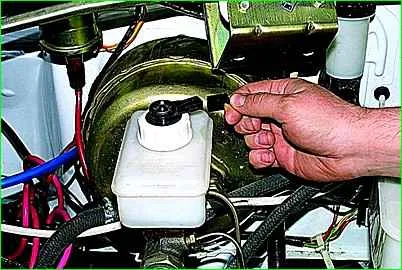
Disconnect the wire block from the emergency brake fluid level drop sensor.

Using a 12mm wrench, unscrew both brake pipe fittings and move them to the side.
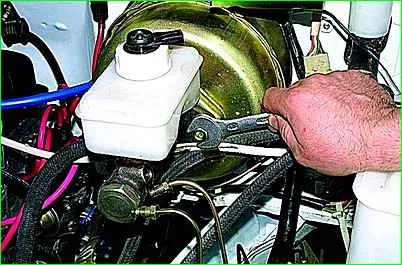
Use a 17mm wrench to unscrew the nut and remove the clamp securing the hoses and wires.

Using a 17mm wrench, unscrew the two nuts securing the master cylinder to the vacuum booster
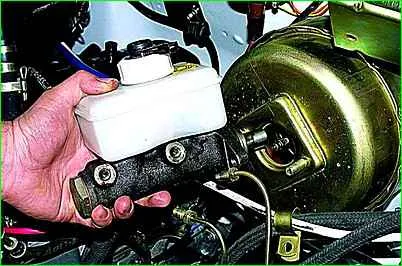
Remove the master cylinder
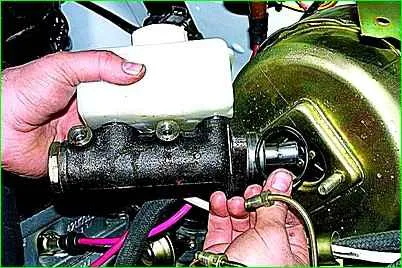
A rubber O-ring is installed between the cylinder and the amplifier. It should be replaced with a new cylinder (in case of replacement)
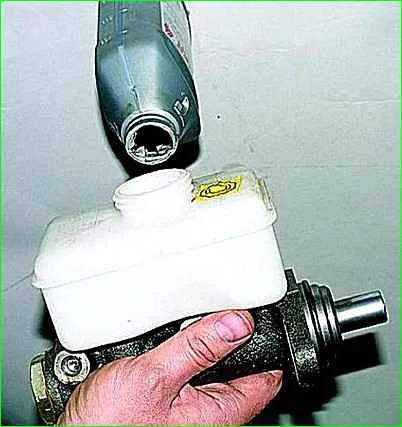
Unscrew the tank cap and, turning the cylinder upside down, drain the liquid from it.
Pressing the piston several times, completely drain the remaining liquid.
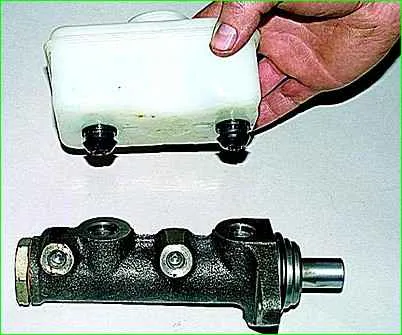
Pulling, remove the tank from the cylinder
Install the brake master cylinder in reverse order.
After filling the reservoir with fluid, check the operation of the brakes and, if necessary, bleed the brake system (see Replacing brake fluid and bleeding the brake system of a Gazelle car).





